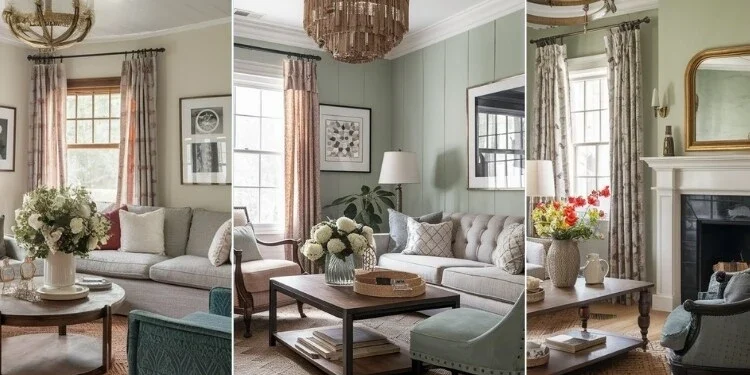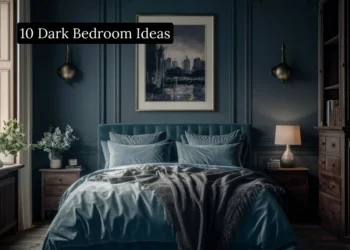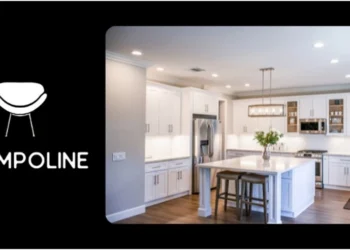Interior design trends often change over time. Some trends stay popular for too long, say experts. In 2024, interior designers list looks homeowners no longer need. Designers update the standard styles that need it.
This article will examine the trends designers most want to retire and discuss why, according to expert interior designers, these looks may need to disappear.
Gray Has Had Its Day
According to many experts, one trend clearly on its way out is the obsession with gray,
“Gray has been everywhere – gray walls, floors, furniture, everything,”
interior designer Sally Soricelli notes.
But cool tones of grey can feel depressing and sterile, mainly when used all over a room.” While gray remains a versatile neutral, designers see homeowners tiring of its ubiquity. Going into 2024, incorporating warmer hues like beige and blush can balance gray’s severity.
Designer Francesca Perry agrees it’s time to “cool off the white-hot trend” for gray and all-white spaces. Minimal, neutral palettes have flooded interiors but lack personality. Designers advocate decorating with color, texture, and individual style.
As architect Adam Nathaniel Furman says, “It’s time to have a little fun!” Express your creativity without relying on drab gray or sterile all-white palettes.
Avoid Kitchens Going to Pot with Tile
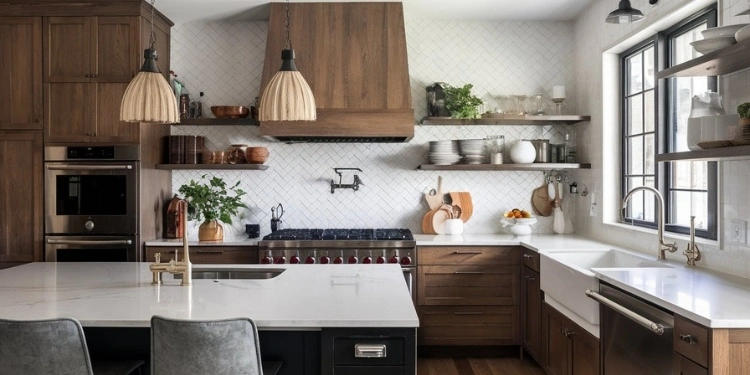
Subway tile backsplashes defined kitchen design for decades but now bore designers. Once a fresh, budget-friendly choice, tile brings problems like porous grout, which is challenging to keep clean.
Designer Sally Soricelli suggests highlighting natural stonework as a higher-end alternative. Stone adds visual interest without the tile’s flaws. Waterfall countertops also get the boot. Designer Kobi Karp says these items prioritize appearance over usefulness.
They gather germs at the edges and take up counter space. Opt instead for a clean, finished edge that’s easy to sanitize. Design trends come and go, but a timeless kitchen has served homeowners for years.
Open Shelving Shows Its Dusty Underbelly
Open shelving posing as storage but thriving as a dust trap is criticized. Designers argue that its grand Instagram potential rarely transfers to actual homes.
“Open shelving is impractical, as dusting dishes perfectly is a chore few enjoy,”
warns designer Jennifer Weisberg.
Instead, light-coloured cabinets hide messes while maintaining an airy aesthetic. Homeowners seeking a curated look save time loading cabinets versus shelving.
Farmhouse Chic Is Out to Pasture
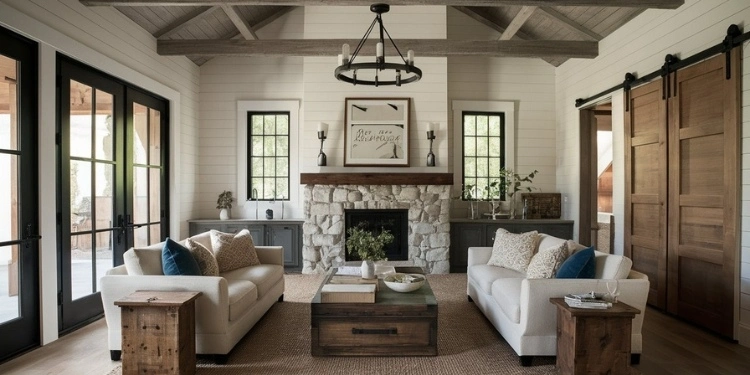
The rustic farmhouse style, centered on shiplap, barn doors, and distressed details, created an empire. But now, according to many pros, its moment has come and gone.
Designer Alessandra Wood rightly says, “Shiplap is overdone – everything seems shiplap-covered now.”
With these homestead accents at “max capacity,” the farm-fresh trend gets sent to pasture, says designer Sally Soricelli. While charming in moderation, its ubiquity made the farmhouse feel played out. In 2024, originality returns as designers find fresh inspiration beyond this done-to-death motif.
Pools of Potential Fall Short as Backsplashes
Another kitchen trend facing extinction? Waterfall countertops, as designer Robert Couturier confirms, could be more practical. While a bold design statement, the form hinders function with hard-to-clean edges that harbor germs.
Designer Kobi Karp agrees that the upsides rarely outweigh this style’s glaring downsides. According to experts Jennifer Weisberg and Kobi Karp, replacing a damaged waterfall is difficult. Spare future remodel hassle by choosing a simple, clean design instead.
Heavy on Hardware But Light on Practicality
Barn doors dividing interior spaces were trendy but have now fallen from favor. Sure, the farmhouse aesthetic attracted many, but sliding panels are “terrible as doors,” admits designer Kobi Karp.
Lacking a proper seal, they provide little soundproofing between spaces. Bulky construction also hinders wall space generally used for displaying art. Designers agree that more straightforward doors better serve most modern layouts and lifestyles. Similar critiques plague vessel sinks.
At the same time, a bold design statement, handling washing, becomes awkward at their shallow depths. Leslie Markman-Stern explains that the concave shape makes cleaning around the sink and faucet hard. Practicality should be prioritized over trendy designs when choosing daily-use fixtures.
Busyness Burnt Out with Backsplashes
Mosaic glass backsplashes excited people for a short time. Now, they bore even trend followers. Designer Alessandra Wood says the busy patterns overwhelm the eyes. After some time, the messy mosaic loses its appeal. It distracts from a kitchen’s main job – preparing food.
A more straightforward material allows surrounding cabinets and counters to stand out. According to the experts, this creates an attractive space for cooking and cleaning. Cabinet designs also saw an over-the-top boom.
“Fanciful cabinet details may date quickly and expensively need replacing,”
warns designer Chandos Dodson Epley.
Cabinets following each curve in catalogs feel like too much showiness. Homeowners benefit more from tasteful basics than from trendy extras that will go out of fashion.
White Design Derailed by Dirt
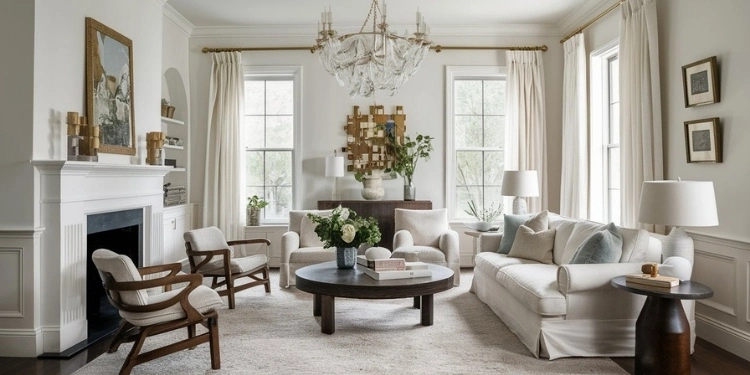
The trials of an all-white interior become apparent, according to experts. Karp adds its “stainability” poses pricey consequences versus more forgiving hues. Cooling off the white-hot trend means escaping high maintenance for the color your vacuum can handle.
Practicality wins over perfection when reality shows white’s quick descent into dinginess. Beige transitions gently convey luxe vibes without the constant cleaning required by stark white.
Dark Schemes Dim Lives
Interior designers observed that dark interiors dominated but now gave way to light, fresh color schemes. Black and deep gray created a moody feeling – still, an oppressive one as the pandemic isolation went on, says Chandos Dodson Epley.
Warm neutrals offer cozier comfort as homeowners replace gloomy parts with brighter colors. Gloom makes room for golden hues that encourage positive feelings through simple decor changes.
Macramé Gets Knotted Up
This hippy-dippy hanging textile trend brought whimsy but went too far. Designer Drew McGukin longs to cut macramé down to size, feeling the style blanketed Brooklyn beyond reason. According to experts, oversaturation triggers fatigue with any look.
While a touch livens up space, ubiquitous macramé strangled its welcome. The style likewise threatens datedness faster than other soft accessories. In 2024, macramé breathes as designers explore fresh textiles with legs.
Bold Statements Dimmed
According to designer Colin Haentjens, extreme color blocking fails to energize spaces long-term. Isolating “pops of color” came and went, yet doing so in primary hues risks a childish ambiance out of step with grownup homeowners. Haentjens advises painting entire walls with compelling colors versus one standout panel.
Unlike bright colors that go out of style quickly, muted accent tones match different interior designs and stay timeless. Tone-down boldness for a sophisticated palette homeowners love living with.
Transparency Troubles Bathroom Trends
Vessel sinks deserve respect as artful fixtures, agrees Markman-Stern, yet they pose problems. With sidewalls, cleaning around sinks and tired-looking fixtures becomes easier. Early damage, owing to specialized vessel components, also impedes repair.
Fortunately, standard sinks provide sanitary hygiene and longevity – critical bathroom necessities. Similarly, open shelving hampers cleanliness, according to Weisberg. Behind closed vanity doors, items stay neat and dust-free.
Minimalism Misses the Mark
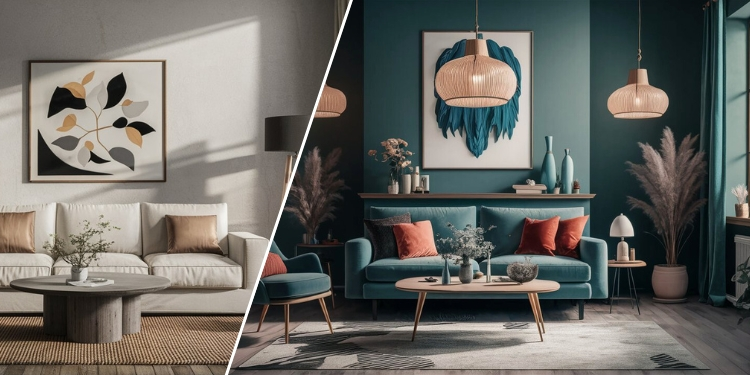
Adam Nathaniel Furman believes focusing too much on white walls and empty spaces can make a room feel peaceful but dull and cold. He thinks that minimalism, with its sparse decoration, can lose personality and visual interest to keep spaces empty.
He encourages revisiting interiors with vibrant style through color, pattern, and decor. According to experts, in 2024, interiors with more life emerge over minimalism’s dullness. Homeowners thrive in expressing their unique tastes above sparse, identical surroundings.
Farewell to Furniture Fakery
Copying famous designs poorly replaces quality fixtures. Designer Shana Sherwood rightly dislikes “fake things,” like cheap copies of Bellini sofas or tiles posing as natural stone. For furnishings-making homes, authenticity matters more than fakes, say experts.
Designers say custom-made or restored vintage pieces personalize space better than budget fakes.
Conclusion
Trends take interior decorating on joyrides, and designers must occasionally corral. As styles saturate markets, professionals point out frivolous fads wasting homeowners’ money. Their collective advice steers clients toward durable basics and personalized panache.
In 2024, originality and functionality lead interior evolution away from overplayed looks. With discernment, every home shines through one-of-a-kind character, not passing trends. Individuality endures where fleeting fashions fade, assuring timeless good taste.

